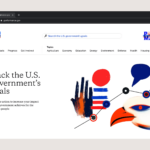As we’re approaching the end of the year, the rush has begun to impact your product and show your value to the Business. Especially this year, when budgets have been tight, it’s difficult to conduct primary research. But don’t fret! You have many options to set yourself up for impact.
Here are three effective strategies UX Researchers & Designers can use to impact your Product for the good of your customers, prove your value to the Business, and set yourself up for success in 2025.
I’m using the metaphor of looking in vs. looking out of your organization or company and using that data to look forward. (See the Impact Problem, linked above, and Eva Schicker’s model for reference).
- Looking “in” can be primary research your team has collected or what your partner teams have collected.
- Looking “out” is about seeking secondary or academic sources out in the industry.
Both of these are retrospective approaches — looking backwards to find what was true in the past (Strategies 1 and 2). Then, you can look towards the future and prioritize testing (Strategy 3).
I like to think of utilizing existing data as, “Low-hanging fruit.” This is one of the easiest places to start and you can do it without incurring additional cost. Simply look for data that exists already and see what hasn’t been acted upon.
The next step is to summarize all the existing research on a project or theme and then share the summary. Many years ago, there was one product I was working on over the course of several studies, and I started counting up the number of times that a certain recommendation came up for participants: nine times! Can you believe it?
I created a table, hyperlinked the findings, and articulated the nuances of each time the feature recommendation was discussed as a solution to a pain point that our customers had.
What happened?
The team finally believed that the problem was big enough to solve and it got fixed.
Research doesn’t exist in a vacuum. Just because the finding or insight came before doesn’t mean it’s not still accurate. Most of the time, it still will be—this is what some folks call, “durable findings.” Or, put another way, Kai Wong discusses the importance of preserving your findings.
Where to look and Whom to talk to
There are also several places you can look for existing data:
- Previous Primary Research Studies: You probably have several of these already. But have you taken advantage of all the insights? What about those insights that were minor at the time but have built up? Are there patterns across your previous studies?
- Analytics and Usage Metrics: Your data scientist probably has access to these. Have you ever sat down with them to go over the trends over the last few months? What behaviors are emerging? Have you seen the impact of your recommendations? More on Analytics in UX from NN/g (YouTube).
- Customer Feedback/Customer Support Calls: There are many ways to approach this one… but your sales team is going to be on the front lines here. Do you know who they are? Marketing is your other friend here, along with Social Media, below. They probably have lots of survey open ends that need some qualitative insight and triangulation!
- Social Media Pulse: Again, see above: Your Marketing partner is your friend here. Of course, just because the wheel is squeaky, doesn’t mean it should get immediate attention… but that’s what a holistic approach is all about. Triangulate the squeaky wheel with other data types and sources and you’re on your way.
If you’re picking up a theme here already, good. I’ll be more explicit:
What you are looking for is a cohesive story across your studies, surveys, customer feedback, and social media.
Is everyone saying the same thing? And if so, is that on the radar of your leadership team? See Strategy 3, below, for planning.
Conducting secondary research is similar in nature to internal primary research in that it’s retrospective, only, it’s external to your company, conducted by someone else (and thus perhaps more “objective,”), and collected in such a way that likely your product or service nuances aren’t specifically accounted for. Mayya Azarova summarizes as follows:
Secondary research is an essential foundation for UX work, necessary to explore the problem space and scope of prior projects and to identify important questions and best practices in the field of study. It also helps to focus the scope of your own project and often saves money. (Source: NN/g)
This doesn’t mean it’s not valuable—it’s actually incredibly valuable. Especially in the cases where this is a premise to your work. While acknowledging that there are nuances between the following terms, I’m going to use them collectively: Desk Research, Lit Review, Academic Lit Review, as each of them involves doing research on the internet for secondary sources and not collecting primary data or doing primary research.
Types of Secondary Research
- Core Concepts, Methodologies, and Best Practices: They say you don’t have to reinvent the wheel for a good reason. Likely, someone else has done something similar and it’s published just waiting to be referenced. On top of reviewing nuances of method, you can also get inspiration on approach and data types. Best Practices mean you can stand on the shoulders of giants and not make the same mistake others have made.
- Theoretical Frameworks: Some of my biggest a-ha moments came from applying frameworks to a problem I’m working on. When you come across something that’s already been validated, it’s like magic. Everything falls into place. And then you can think about your product differently when applying an industry standard.
- Historical Context and Emerging Trends: Shifts in consumer behavior, technological advancements (like AI!), and new business practices all give a historical context to what’s going on right now. By placing your product in the historical context, you can better take that step back to look at broader trends.
- Competitive Landscape: This can be from a product or feature lens and compares publicly existing data and experiences from your product vs. your competitors. This is a great place to start for future Competitive Benchmarking studies where you test your product head-to-head against your competitors. For more inspiration here, check out Mark Bridges’ collection of Competitive Analysis & Strategy Case Studies.
- Gaps in knowledge in the industry: Gaps of previous work lead to new research to conduct. When you find a gap, see if your product can solve it and then plan the research (Strategy 3, below), to position your product ahead of your competitors, identify areas for product innovation, and the application of new models and practices.
- Regulatory Compliance & Risk Management: I know, not a fun one, but you never know until you look. You should be looking… especially as emerging technologies move towards government legislation. It’s important to be on top of this!
- Ethical Considerations: A really fun area right now, especially in conversations about the ethical application of AI. This is certainly a whole article worth, so I’ll just call it out as a direction you can explore as you develop human-centered AI-informed products. Learn more about Human-Centered AI (HCAI).
- Cultural Perspectives: Does your Product or service exist in more than one market? Have you done any research or design in those markets to see how customers are different? If you answered NO to either of these questions, then this is a massive opportunity! Check on this presentation I gave on Interpreting Cross-Cultural Data to get you started.
A little curiosity goes a long way! Just be sure to cut yourself off when you’ve found,”Enough,” (yes, I know this is difficult for many of us!). Time box it so you can keep moving forward to the next strategy, Looking Ahead.
The point of all of this is to make better decisions about your customers and your product going forward. By understanding what you know, what your team knows, and what the industry knows, you can get a complete, or “holistic” picture of where your product is at in your market. Knowing all this, the story should clearly emerge.
Here are some questions to ask yourself:
- When you put it all together, does it tell a consistent story?
- What are the gaps in knowledge in yourself, your product, your market, and your industry?
- Once identified, does it make sense for you to fill those gaps?
- If you take a look at all the potential projects and studies you can do, which of them will make the most impact? To the Product? To the Business?
- Are your organization’s strategic initiatives in line with your primary and secondary research synthesis? Look for any misalignment and dig in to see if it’s important to raise the flag.
“Strategy” is really just a fancy word for, “This is what we should do next.”
Based on all we know, here’s a path forward. And, if there’s something you don’t know, that’s part of that path.
This process should bring you closer to your product team. They will see you in a new light. And you will start being seen as someone who understands “The Business.” Which means you’ll be promoted.
Benefits of this Approach
- Risk Reduction: Make sure you have identified all the potential risks and accounted for them, or “mitigated,” them. It’s best to be up front and call out potential threats so everyone is aware and then someone can take action on them.
- Data-Backed Decisions: Ideally, you’re always doing this, but it’s good to find the data to support decisions that are being made in your org. You never know when someone is going to ask for it, and having them published somewhere or at the tip of your fingers means that you will be perceived as knowledgeable when it comes to customer and product data. Win.
- Knowledge Sharing: Maybe your teams don’t share much… you wouldn’t be the first, unfortunately. This is an opportunity to break down political barriers and be a part of the solution.
- Cost-Effective: I’m coming full circle here. It’s a lot more cost effective to summarize what we know (with a strategic focus, of course), than it is to conduct more primary research. There is a time and a place for that, and truly, it’s a huge need right now. This helps you get ahead of that curve and position yourself as the go-to person.
- Speed / Time to Market: This process helps you move fast (see the link above for Cost-Effective as well). Both internal speed and external speed of getting a better product out to your customers faster. We shouldn’t be sitting on insights, we should be acting on them.
In business and UX, knowledge is far more than just power — it’s the lever that drives profit, multiplies impact, and fuels advancement. When you strategically capitalize on untapped insights and align them with your most critical business objectives, you don’t merely save resources — you unlock momentum. This approach propels you ahead of your competitors and positions you as a market leader with speed and precision.
Business people want solutions to problems, not just identification of problems. UX People hold the key: solutions to those problems validated with customers.
What have you tried? What success stories do you have employing these methods? I’d love to hear about it!



